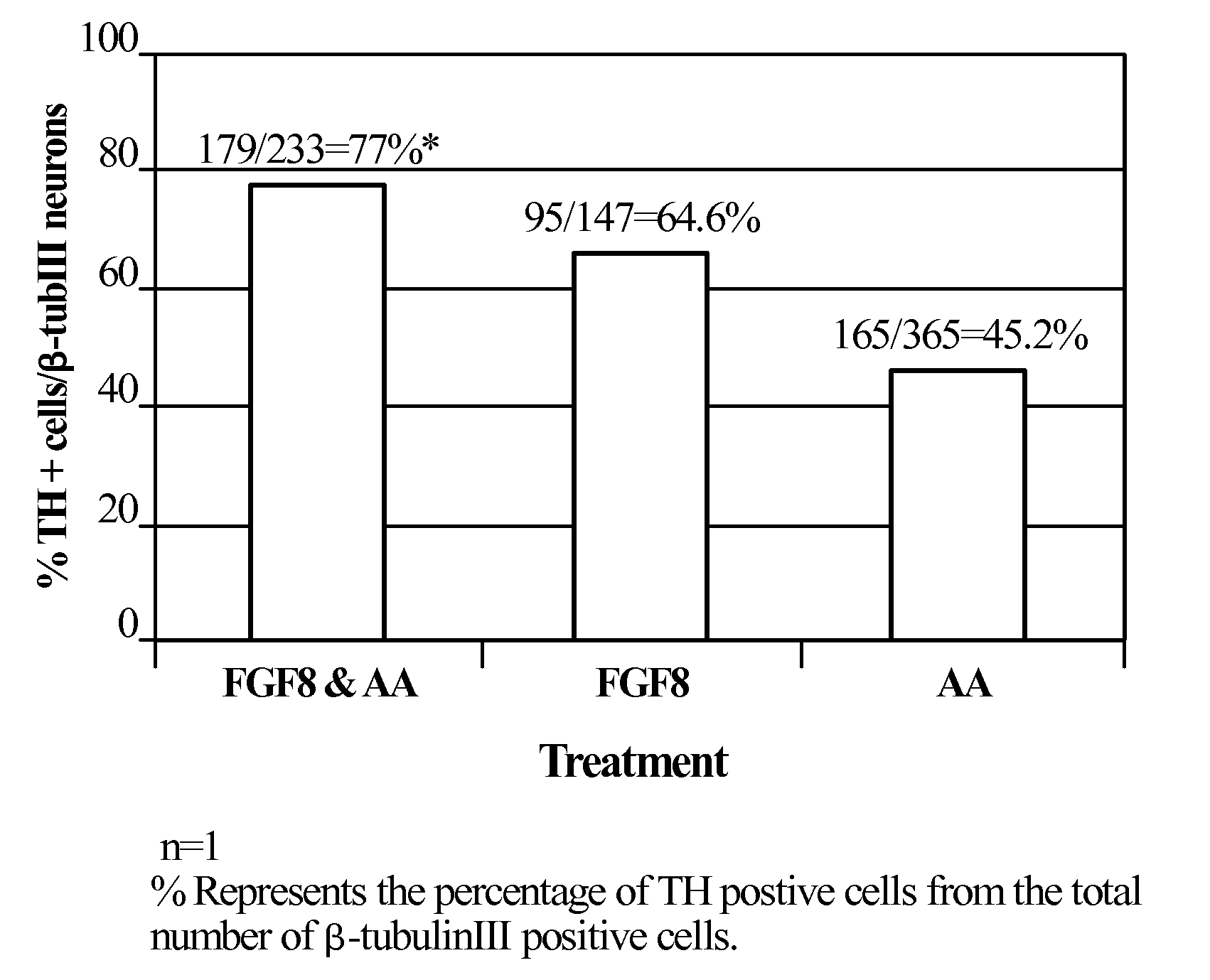Generation of neural stem cells undifferentiated human embryonic stem cells
a neural stem cell and human embryonic stem cell technology, applied in the field of neural stem cell generation from human embryonic stem cells, can solve the problems of non-specific mixed differentiation of human, low survival rate, clinical utilization of this approach, etc., and achieve the effect of reducing rotational behavior and reducing rotational behavior
- Summary
- Abstract
- Description
- Claims
- Application Information
AI Technical Summary
Benefits of technology
Problems solved by technology
Method used
Image
Examples
example 1
Directed Differentiation of hES Cells into Highly Enriched Cultures of Neural Progenitors
[0225]A. Induction of Differentiation on Feeders with Noggin Coupled with Manipulation of Culture Conditions.
[0226]To derive enriched preparations of neural progenitors, differentiation of human ES cells was directed into neural fate by transfer of undifferentiated hES cell clumps onto fresh feeders and culture in a modified hES cell medium with reduced serum concentration and in the presence of the BMP antagonist noggin. Specifically, human ES cells (HES-1 cell line, Reubinoff et al 2000, PCT / AU99 / 00990) with a stable normal (46XX) karyotype were cultured on mitomycin C mitotically inactivated mouse embryonic fibroblast feeder layer in gelatine coated tissue culture dishes as previously described (Reubinoff et al., 2000 PCT / AU99 / 00990 and PCT / AU01 / 00278). To induce differentiation, at the usual passage, clumps of undifferentiated ES cells were plated on fresh feeders and cultured in the usual h...
example 2
Directed Differentiation of hES Cell-Derived Neural Progenitors Towards a Midbrain Fate
[0244]Neurospheres that were generated from noggin treated ES cell colonies as described above (Example 1) were propagated 21-35 days in NPM supplemented with FGF-2 and EGF. At this point the spheres were chopped into small clumps (2000-3000 cells per clump). FGF-2 and EGF were removed from the medium and the progenitors were directed to take a midbrain fate by treatment with various factors for 6-8 days. During treatment with the various factors the clumps were either cultured in suspension or plated on poly-D-lysine and laminin. The factors included. FGF1, FGF8, FGF17 (R&D Systems) at concentrations of 100-200 ng / ml SHH (R&D Systems) at 0.5-1 μg / ml. Other signal transduction inducers: cAMP inducers: IBMX (Sigma, 0.25 mM), forskolin (Sigma 50 μM), PKC inducers PMA (Sigma 200 nM) and dopamine (Sigma 20 μM) were also used. The medium was also supplemented with the survival factors Ascorbic acid (AA...
example 3
Improvement of Behavioural Deficit in an Animal Model of Parkinson's Disease Following Transplantation of hES Cell Derived Neural Progenitors
[0253]A Parkinson's disease model in rats was induced by stereotaxic injection of the neurotoxin 6-hydroxydopamine to cause unilateral nigrostriatal lesions. 8 μg / rat of 6-OH dopamine were injected in 4 μl into the right Substantia Nigra. Coordinate of injection were P=4.8, L=1.7, H=−8.6.
[0254]Two weeks after the injection of neurotoxin the disease severity was examined in each rat individually by administration of apomorphine (25 μg / 100 g body weight) and quantification of contralateral rotational behaviour by computerized rotameter system (San-Diego Instruments). It should be noted that in early experiments, rotations were counted by an observer 4 times every 12 minutes, for three minutes each time after apomorphine administration. Animals with strong baseline rotational behavior (>500 rotations / hour) were selected for transplantation. In the...
PUM
| Property | Measurement | Unit |
|---|---|---|
| concentration | aaaaa | aaaaa |
| concentration | aaaaa | aaaaa |
| concentration | aaaaa | aaaaa |
Abstract
Description
Claims
Application Information
 Login to View More
Login to View More - R&D
- Intellectual Property
- Life Sciences
- Materials
- Tech Scout
- Unparalleled Data Quality
- Higher Quality Content
- 60% Fewer Hallucinations
Browse by: Latest US Patents, China's latest patents, Technical Efficacy Thesaurus, Application Domain, Technology Topic, Popular Technical Reports.
© 2025 PatSnap. All rights reserved.Legal|Privacy policy|Modern Slavery Act Transparency Statement|Sitemap|About US| Contact US: help@patsnap.com



